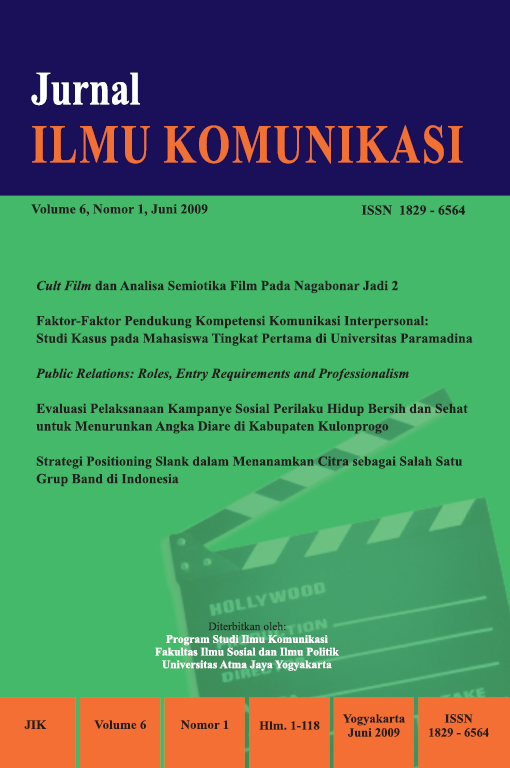Public Relations: Roles, Entry Requirements and Professionalism
DOI:
https://doi.org/10.24002/jik.v6i1.206Abstract
Abstract: This paper attempts to describe that there is a chance for non-Public Relations graduates to work as or at the Public Relations industry. Studies have shown that Public Relations practitioners are mostly from generalist background (not Public Relations) and even come into the job by chance. A Public Relations is a very sociable person, possess a mix of functional, managerial and negotiating abilities as well as analytical and well-developed communication and understand people and human psychology. With working roles of Expert Prescriber, Communication Facilitator, Problem Solving Facilitator and Communication Technician, a Public Relations needs to be well prepared by learning foreign language, joining personality improvement course, developing networking and understanding computer and communication technology. Areas of where a Public relations works are in-house (organization/company), consultancy and freelance practitioner having various titles showing their main function in the organization such as public affairs, event manager, community relations manager, marketing communication executive, employee relations manager, corporate communications manager, media coordinator. As there is an increased challenge of Public Relations’s professionalism, a true practitioner is best prepared by educational institutions with lecturers having sound education and practice combined with extensive link-and -match research and industrial-practical placement for the graduates.
Downloads
Published
How to Cite
Issue
Section
License
Jurnal ILMU KOMUNIKASI is an academic journal. As such, it is dedicated to the open exchange of information. For this reason, JIK is freely available to individuals and institutions. Authors who publish in Jurnal ILMU KOMUNIKASI will release their articles under the Creative Commons Attribution (BY) License. This license allows anyone to copy and redistribute the article in any medium or format as well as remix, transform, and build upon the material for any purpose, even commercially as long as they credit the authors for the original creation. For details of the rights authors grants users of their work, see the "human-readable summary" of the license, with a link to the full license. (Note that "you" refers to a user, not an author, in the summary)
 This work is licensed under a Creative Commons Attribution 4.0 International License.
This work is licensed under a Creative Commons Attribution 4.0 International License.














